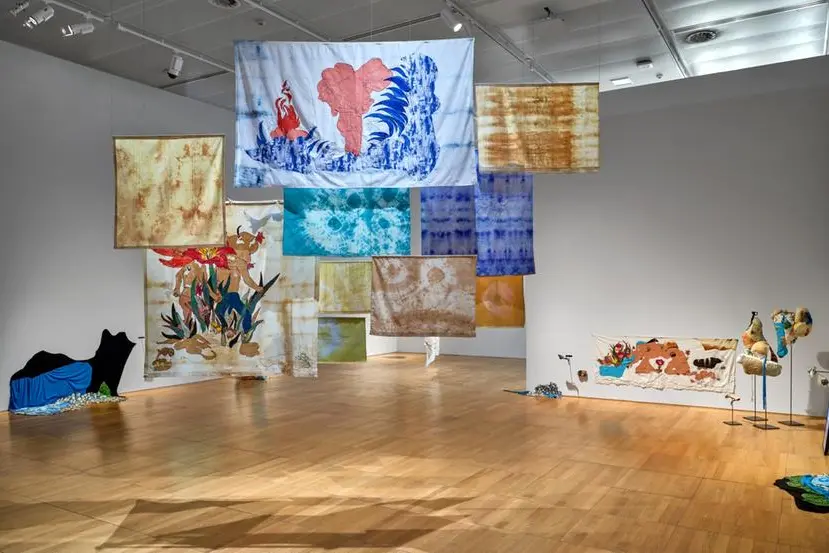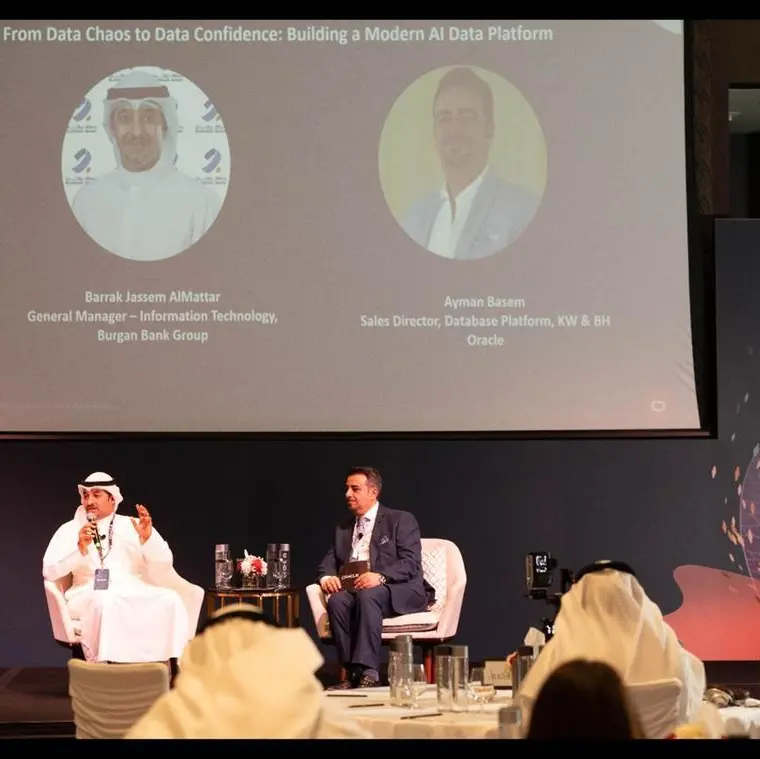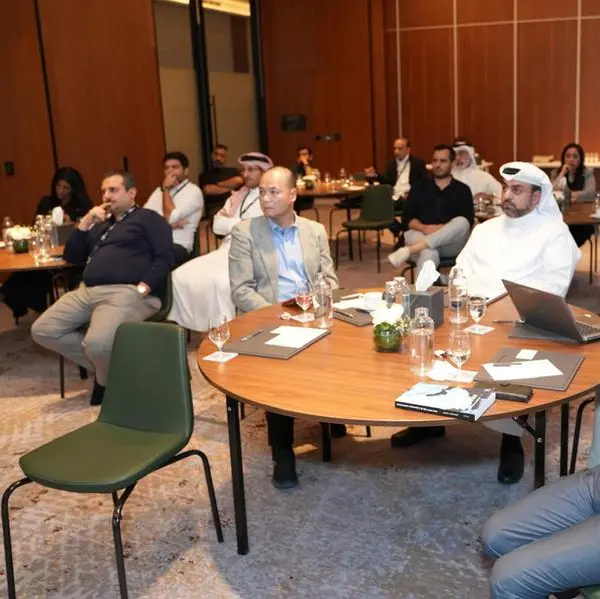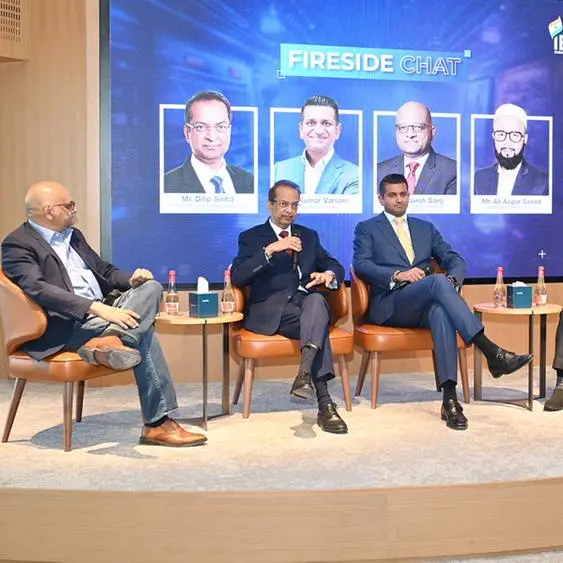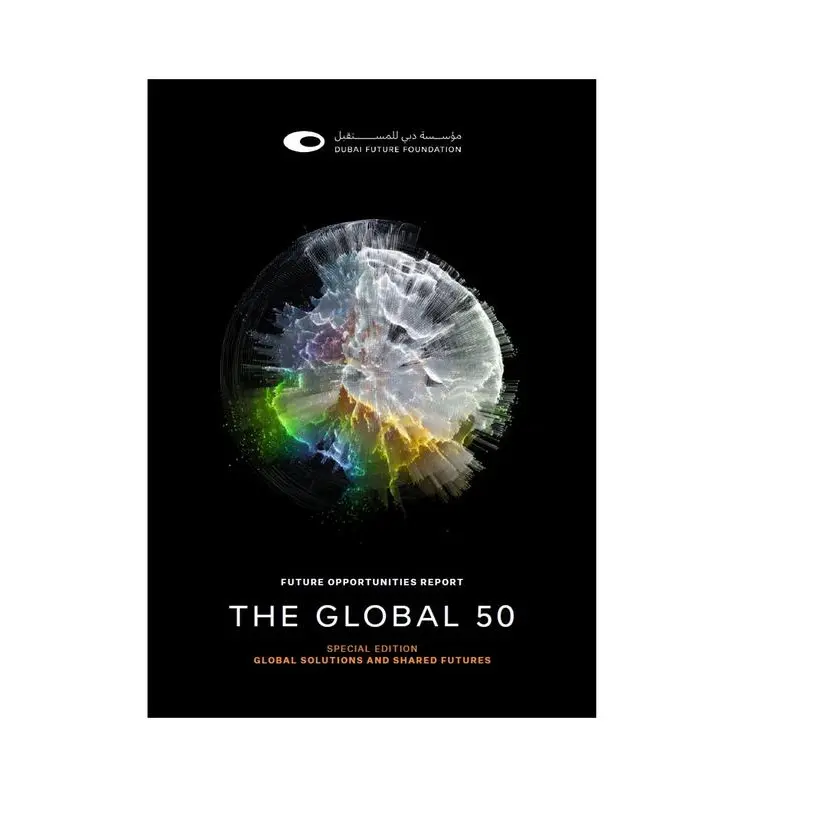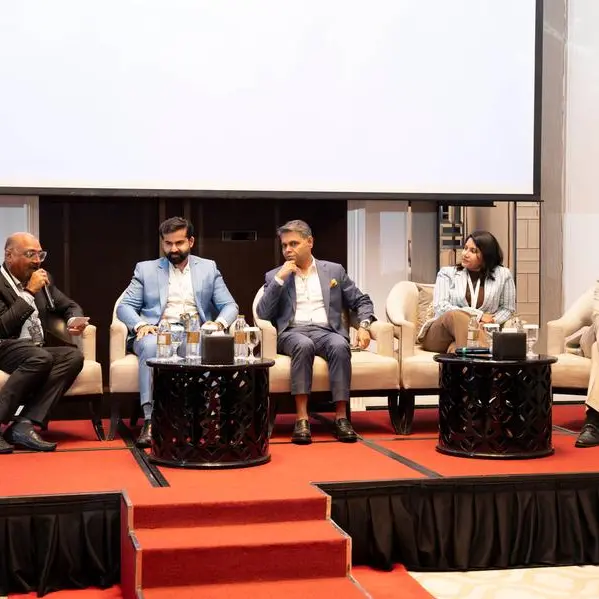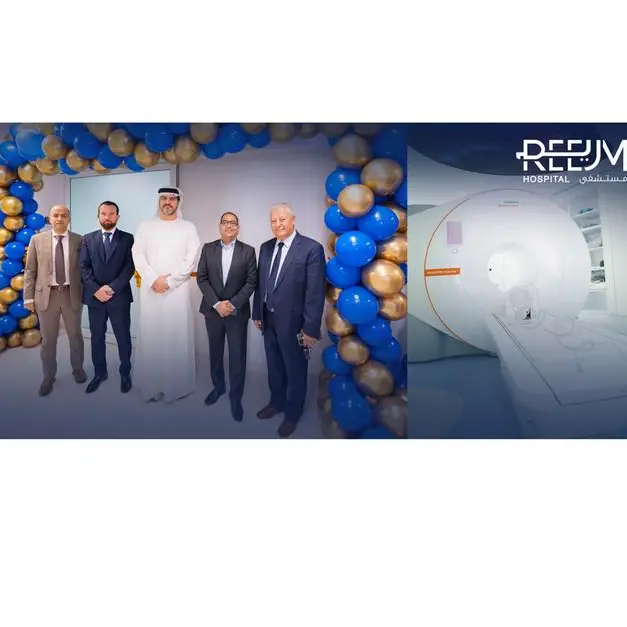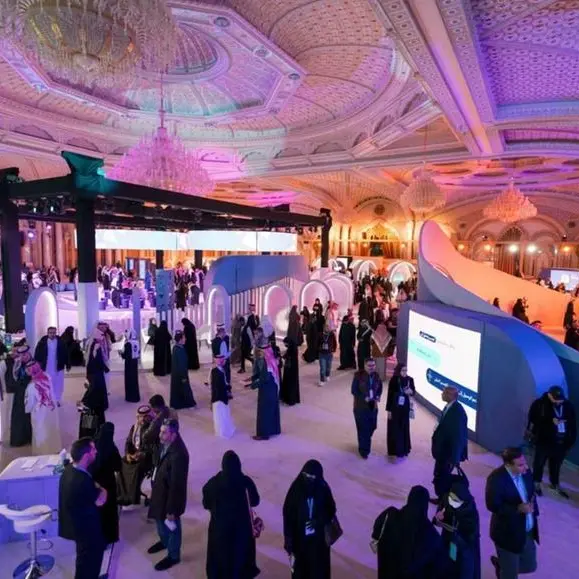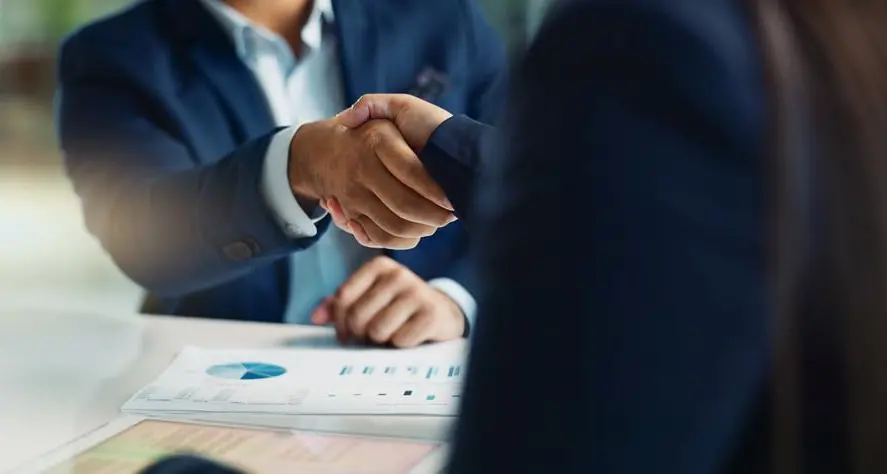PHOTO
- Live performances, installations, and a dynamic roster of artists responding to the moment will test the limits of the curatorial form
- The exhibition marks the next phase of the NYUAD Art Gallery’s exploration as it enters another decade of experimentation and knowledge production
Abu Dhabi: The NYU Abu Dhabi (NYUAD) Art Gallery marks ten years since its founding with the opening of its spring exhibition, In Real Time. Opening today, February 22, the exhibition will continue to grow and change over the coming months, “in real time.”
A number of artists have already installed artworks, and others will make work in the future. As of today, artists assembled by Chief Curator Maya Allison include Moza Almatrooshi, Rana Begum, Chafa Ghaddar, Gözde İlkin, Sol LeWitt, Cristiana de Marchi, and Haleh Redjaian, as well as the artist trio Ramin Haerizadeh, Rokni Haerizadeh and Hesam Rahmanian with Julie Becton Gillum and Kiori Kawai. As new artists or performers are added, the list will grow, and the Art Gallery’s Instagram account will announce artists and artwork developments in real time.
Today, some artworks appear as a letter of intent, to be performed or installed in the future. Some works will be changed by performers. Some might only last one day. Some are already made, with a specific message: consider the space around yourself. Two of the works will be made entirely by the hands of the community. Others are not even mentioned yet.
The exhibition is curated by Executive Director of the NYUAD Art Gallery Maya Allison, with a curatorial intervention by Curator and Research Assistant Professor Duygu Demir, who recently joined NYU Abu Dhabi. Demir is collaborating with artist Gözde İlkin to install an entire scenography, to be activated by performers in the coming months.
Maya Allison commented: “Every time I embark on a new curatorial project, I ask the ‘why’ of art. This line of questioning is a bracing, uncomfortable process, but a very rewarding one because the answer changes depending on what is happening in the world. In Real Time emerges in response to a sense of urgency, today: perhaps art can offer something different from the news, from the scroll, and yet not distract us or make us forget. As the show evolves, history unfolds around us. What do we need from a space for art in this particular moment, in this particular part of the world, in a university, in an academic gallery? I hope this exhibition allows for any number of responses.”
The NYUAD Art Gallery’s founding decade has seen major artist commissions, book publications, and historical research exhibitions from across the globe that have earned it international recognition and awards. It also supports an exhibition laboratory, the Project Space, for the academic and regional community, including MFA and undergraduate final projects, faculty-curated exhibitions, and the work of regional emerging artists. Together, the spaces of NYUAD’s Art Gallery serve as a testing ground for curatorial strategies that nourish innovation around exhibition practice in the Gulf, and in dialogue with the global art world.
Listings information
- Exhibition title: In Real Time at the NYUAD Art Gallery
- Exhibition dates: February 22 to June 9, Tuesday through Sunday, 12-8 pm. Closed on Mondays.
- Admission: Free
- Exhibition page: Click here for more details.
Artist biographies
Moza Almatrooshi (UAE)
The Sharjah-based artist and pastry chef describes her practice as one of looking at “narratives from ancient and contemporary mythologies in the Arabian Peninsula” as they relate to nation-building, which, in her work, “culminates in fictions and metaphors derived from regional food production practices and food politics”. She earned an MFA from Slade School of Fine Art, London, followed by a diploma in culinary arts from ICCA Dubai, and is also a recipient of the Salama bint Hamdan Al Nahyan Emerging Artists Fellowship (SEAF). Her works have been featured in international biennials, as well as museums around the world. Her writings have been published in ArabLit Quarterly, and by the Contemporary Image Collective in Cairo.
Rana Begum (Bangladesh)
Rana Begum’s work draws from the visual language of architecture, Minimalism, and Islamic design. Moving between traditional hand-made technologies and modern ones, her work consistently activates the space around the visitor, drawing attention to the nuance of surfaces and light.
Her solo work has been included in many international institutions and museums, as well as group exhibitions at numerous institutions worldwide. Her artwork is in public and private collections.
Born in Bangladesh, Begum relocated to the UK as a child. She earned a BA in Fine Art at the Chelsea College of Art and Design, and an MA in Painting from the Slade School of Fine Art. She lives and works in London.
Chafa Ghaddar (Lebanon)
Wall painting and surface finishing are central to the Chafa Ghaddar’s practice. She explores the use of fresco as a contemporary mode of making, as well as other techniques, and works equally with murals, painting, drawing, photography, and mixed media. The artist executes site-specific and public artworks, and has participated in solo and group exhibitions. She has been awarded several artist fellowships and residencies, including the Tashkeel Studio Critical Practice Program, the Salama Emerging Artist Fellowship, and the artist-in-residence program at the Villa Empain, which also awarded her the Boghossian Art Prize for painting in 2014. Her work is in various international collections. Ghaddar graduated from Académie Libanaise des Beaux Arts (ALBA), where she earned her Bachelor’s in Fine Arts in 2007 and a Master’s in Visual Arts in 2009. She lives and works in Dubai.
Gözde İlkin (Türkiye)
Gözde İlkin lives and works in Istanbul, Turkey. She earned her BFA and MFA degrees in painting from Mimar Sinan University of Fine Arts and Marmara University respectively. İlkin was part of the artist collective Atıl Kunst between 2006 and 2013. In İkin’s early work, she often stitched or made patchwork on repurposed fabrics that she collects, such as tablecloths, curtains, and bed duvets. These focused exclusively on dormant tensions within the domestic sphere, with imagery that departed from family photographs. Her motifs later expanded to include cityscapes, flora and fauna, as well as ancient forms from archeological sites; urbanization, gender dynamics, and power took center stage. With a growing interest in healing, İlkin has more recently shifted her attention to plants, using them both as conveyors of stories as well as employing them to color her fabrics or stitching their seeds into the pockets of her increasingly three-dimensional fabric works. İlkin has shown her work in biennials, as well as numerous solo and group exhibitions in museums internationally. Her works are included in public and private collections.
Sol LeWitt (USA)
The late Sol LeWitt has been the subject of hundreds of solo exhibitions in museums and galleries worldwide since 1965. His prolific two- and three-dimensional work ranges from wall drawings, to photographs and hundreds of works on paper and extends to structures in the form of towers, pyramids, geometric forms, and progressions. Encyclopedia Britannica credits Lewitt for his role in revolutionizing the definition of art, beginning with his 1967 statement in Artforum, “In conceptual art the idea or concept is the most important aspect of the work… all of the planning and decisions are made beforehand and the execution is a perfunctory affair. The idea becomes a machine that makes the art.” With thanks to the Estate of Sol LeWitt.
Cristiana de Marchi
Cristiana de Marchi is a visual artist and writer who lives and works in Dubai. She describes her practice of textiles, film and performance as one through which she explores “the relation between time, space and their stratifications, often through the lens of the unequal relation between justice and legality”. Her work has appeared in international biennales, and she has exhibited in solo and group exhibitions at numerous museums and institutions. Her work is held in various collections and she has held numerous artist-in-residence positions. Awards include “Best 15 Award” and the “Best Independent Artist Award” (Torino, Italy), and the Italian “Premio ORA”. Her poetry book Embodying was published by Sharjah Art Foundation. De Marchi is currently a PhD candidate in the Artistic Research Programme at the University of applied Arts, Vienna. She is a graduate of the Salama bint Hamdan Emerging Artists Fellowship (Abu Dhabi). She received her MFA with honors in Archaeology from The University of Turin, Italy.
Ramin Haerizadeh (Iran), Rokni Haerizadeh ( Iran), and Hesam Rahmanian (USA)
In Ramin, Rokni, and Hesam’s art making, production is performance, and performance is a collective action leading to dance, art, and politics. The trio investigate a model of how to collaborate, translating it into multiple forms, which often evolve with artists and people from different walks of life. Through this body assembly, they explore the creation of a self-sustaining creative life; how to build an aesthetic and undermine it; how to be politically acute and humorous, generous and eccentric. The trio’s work is often referred to as a landscape where the complex nature of processing is integrated in the nested system that forms the landscape of their shows. Major museums and institutions have featured solo exhibitions of their work and they have appeared in multiple biennials, as well as being represented in extensive museum collections worldwide. The trio has been awarded the Black Mountain College Prize, OGR Torino & Fondazione per l’Arte Moderna e Contemporanea CRT Prize, and Han Nefkens Foundation/MACBA Award. Their collaborative practice formed in 1997 in Tehran, and the artists have resided in the UAE since 2009.
Haleh Redjaian (Germany)
Haleh Redjaian’s practice is one of drawing, grounded in geometry, and with an acute awareness of negative space on the page and in the gallery. Her works on paper, textiles, murals, and spatial thread installations are ordered by structures and systems, while also embracing irregularities and deviations. They create rhythmic surfaces and spaces of reflection.
Her work has been exhibited in solo and group shows at museums and institutions. In 2021 the Cultural Foundation of Hesse awarded Redjaian a year-long travel fellowship, which allowed her to work in Iran and Senegal, continuing her research around weaving techniques as well as the interplay between craft and rhythm. Redjaian is an Iranian German who lives and works in Berlin. She studied art history at the Goethe University of Frankfurt, followed by study of drawing, printmaking, and sculpture at the Royal Academy of Fine Art in Antwerp. She completed a postgraduate degree in fine art at the Higher Institute of Fine Art in Antwerp.
About the NYU Abu Dhabi Art Gallery
www.nyuad-artgallery.org
Established in 2014, the NYU Abu Dhabi (NYUAD) Art Gallery is the Gulf’s first of its kind, and among the only university galleries in the region with a program of scholarly and experimental museum exhibitions. Supporting the progress made by other arts institutions within the UAE, the NYUAD Art Gallery and the projects it supports serve the local arts community as a testing ground for new and innovative curatorial approaches that nourish the dialogue around exhibition practice in the Gulf. The program is recognized for mapping new territories and ideas, presenting exhibitions by internationally established artists, curators, and scholars. A regular book publication program is a core part of its curatorial frame within its academic mission. In addition, its auxiliary venue, the Project Space is an exhibition laboratory for UAE-based artists and curators. Situated within NYU Abu Dhabi, the community of which hails from over 125 countries, the Art Gallery, the Project Space, and the Art Gallery's Reading Room collectively open up artistic opportunities and initiate regional and global dialogue.
About NYU Abu Dhabi
https://nyuad.nyu.edu/en/
NYU Abu Dhabi is the first comprehensive liberal arts and research campus in the Middle East to be operated abroad by a major American research university. NYU Abu Dhabi has integrated a highly selective program with majors in the sciences, engineering, social sciences, arts, and humanities with a world center for advanced research. Its campus enables students to succeed in an increasingly interdependent world, and to advance cooperation and progress on humanity’s shared challenges. NYU Abu Dhabi’s high-achieving students have come from over 125 countries and speak over 100 languages. Together, NYU's campuses in New York, Abu Dhabi, and Shanghai form the backbone of a unique global university, giving faculty and students opportunities to experience varied learning environments and immersion in other cultures at one or more of the numerous study-abroad sites NYU maintains on six continents.
